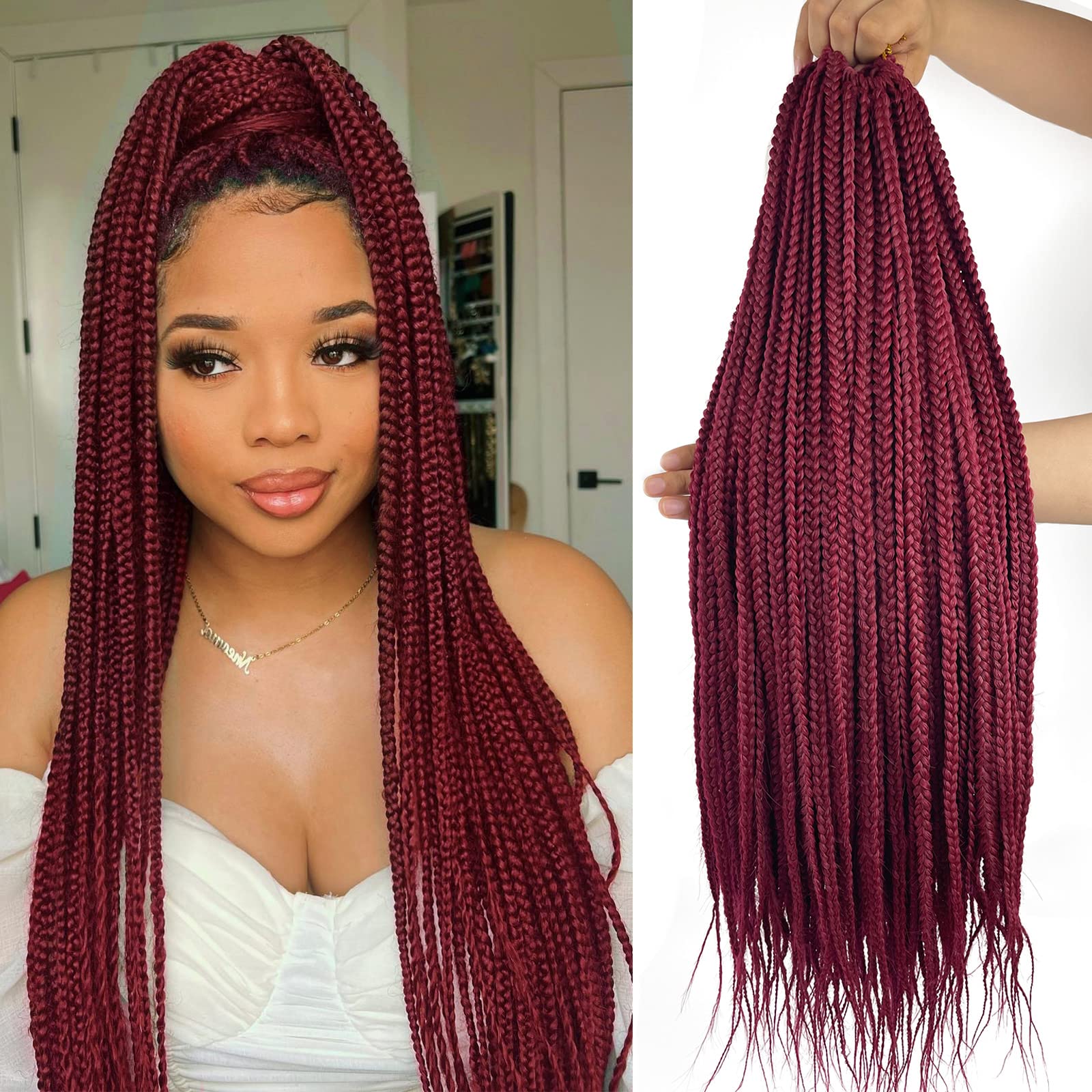Synthetic Hair Braids: Understanding The Health Concerns For Black Women

Table of Contents
Traction Alopecia and Hair Loss
Tightly braided synthetic hair is a significant contributor to traction alopecia, a form of hair loss caused by prolonged tension on the hair follicles. The constant pulling on the hair shafts weakens the follicles over time, eventually leading to hair thinning, a receding hairline, and in severe cases, permanent hair loss. This is particularly concerning because heavy synthetic braids often exert more pressure than natural hair styles.
- Tight braiding: The act of braiding itself, especially when done tightly, pulls on hair follicles, weakening them over time.
- Weight of synthetic hair: Synthetic hair extensions can be heavier than natural hair, adding to the tension on the scalp and increasing the risk of traction alopecia.
- Irreversible damage: Prolonged use of tight braids can cause irreversible damage to the hair follicles, resulting in permanent hair loss.
- Recognizing the signs: Signs of traction alopecia include thinning hair, particularly around the hairline, a receding hairline, and tenderness or pain on the scalp.
Scalp Infections and Irritation
The intricate nature of synthetic hair braids, coupled with infrequent washing, creates a perfect environment for the growth of bacteria and fungi. The braids trap sweat, dirt, and oil against the scalp, preventing proper ventilation and leading to scalp irritation and infections. Leaving braids in for extended periods significantly increases this risk.
- Trapped moisture: Synthetic hair acts as a barrier, trapping moisture and creating a breeding ground for microorganisms.
- Infrequent washing: Neglecting to wash the hair and scalp regularly allows bacteria and fungi to thrive.
- Recognizing infection: Symptoms of scalp infections include itching, redness, flaking (dandruff), pus, and sometimes even sores.
- Prevention through hygiene: Regular washing, using gentle shampoos, and proper braid maintenance are crucial for preventing scalp infections.
Hair Breakage and Damage
The weight and texture of synthetic hair, coupled with tight braiding techniques, can contribute to significant hair breakage and damage. The friction between the synthetic fibers and natural hair, combined with dryness caused by the braids, exacerbates the problem.
- Friction and breakage: The synthetic hair can cause friction against your natural hair leading to split ends and breakage.
- Improper detangling: Rough or forceful detangling can further damage the hair and lead to significant hair loss.
- Dryness: Synthetic hair can contribute to dryness, making the hair more prone to breakage.
- Preventing damage: Regular conditioning treatments, moisturizing the hair and scalp, and gentle detangling techniques are crucial for preventing hair damage.
Choosing the Right Synthetic Hair
The quality of the synthetic hair you choose significantly impacts your hair health. Opting for high-quality synthetic hair with a softer texture reduces the likelihood of damage. Consider lightweight braids and styles that minimize tension on the scalp. Choosing appropriate braid sizes is also crucial; larger braids put less stress on the hair follicles.
Minimizing Risks: Tips for Healthy Hair Practices
Several strategies can significantly reduce the risks associated with wearing synthetic hair braids. Prioritizing scalp health and employing proper care techniques are essential.
- Avoid excessively tight braids: This is the single most important step in preventing traction alopecia.
- Maintain cleanliness: Keep your braids and scalp clean to minimize the risk of infections.
- Gentle detangling: Use a wide-tooth comb and detangle gently to minimize breakage.
- Regular breaks: Give your hair and scalp a break from braids periodically to allow for proper ventilation and healing.
- Consistent moisturizing: Keep your hair and scalp moisturized to prevent dryness and breakage.
- Consult a professional: If you experience any scalp problems, consult a dermatologist or trichologist.
Conclusion
Synthetic hair braids offer a stylish and convenient protective styling option for Black women. However, understanding the potential health risks—traction alopecia, scalp infections, and hair breakage—is crucial for maintaining healthy hair and scalp. By following proper hygiene practices, choosing appropriate braiding techniques, prioritizing scalp care, and making informed choices about synthetic hair quality, you can significantly reduce the likelihood of experiencing these problems. Protect your hair and make informed choices! Learn more about responsible synthetic hair braid techniques and prioritize your scalp health. Remember, beautiful hair starts with a healthy scalp.

Featured Posts
-
 Taylor Swifts Status Questioned By Trump Maga Supporters React
May 27, 2025
Taylor Swifts Status Questioned By Trump Maga Supporters React
May 27, 2025 -
 Oscars 2024 Nora Fatehis Stunning Golden Gown Steals The Show
May 27, 2025
Oscars 2024 Nora Fatehis Stunning Golden Gown Steals The Show
May 27, 2025 -
 Investigating The Yellowstone Magma Reservoir Predicting Future Volcanic Behavior
May 27, 2025
Investigating The Yellowstone Magma Reservoir Predicting Future Volcanic Behavior
May 27, 2025 -
 Selena Gomezs Claim About Blake Lively A Wake Up Call For Taylor Swift Amidst Lawsuit
May 27, 2025
Selena Gomezs Claim About Blake Lively A Wake Up Call For Taylor Swift Amidst Lawsuit
May 27, 2025 -
 Punxsutawney Phils Childs First Birthday Celebration
May 27, 2025
Punxsutawney Phils Childs First Birthday Celebration
May 27, 2025
Latest Posts
-
 Nasjonaldagen I Moss 17 Mai Program Aktiviteter Og Mer
May 29, 2025
Nasjonaldagen I Moss 17 Mai Program Aktiviteter Og Mer
May 29, 2025 -
 Mai Arrangementer I Moss Alt Du Trenger A Vite
May 29, 2025
Mai Arrangementer I Moss Alt Du Trenger A Vite
May 29, 2025 -
 Festspill I Moss 17 Mai Fullstendig Program Og Overaskelse
May 29, 2025
Festspill I Moss 17 Mai Fullstendig Program Og Overaskelse
May 29, 2025 -
 Mai Moss Feir Nasjonaldagen Med Oss
May 29, 2025
Mai Moss Feir Nasjonaldagen Med Oss
May 29, 2025 -
 Mai I Moss Programmet For Nasjonaldagen Er Klart
May 29, 2025
Mai I Moss Programmet For Nasjonaldagen Er Klart
May 29, 2025
